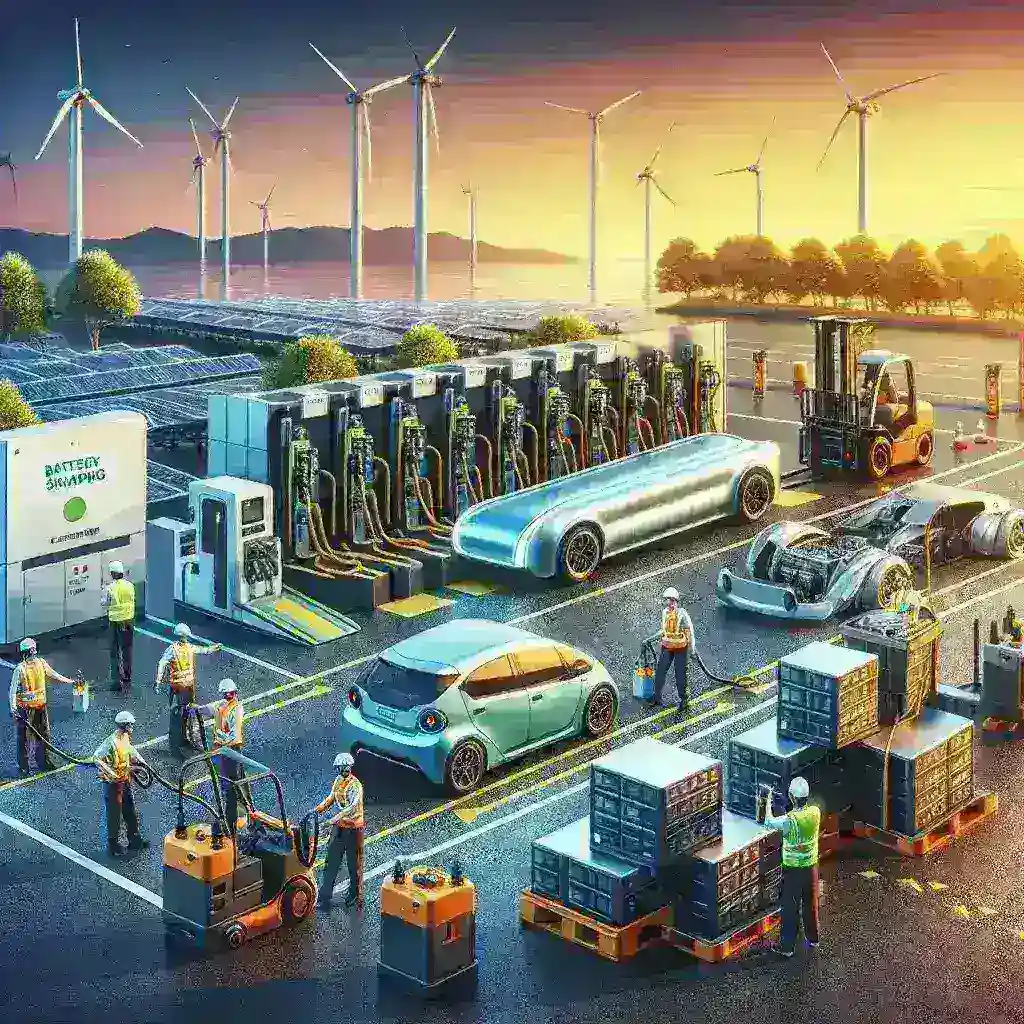Introduction
The rise of electric vehicles (EVs) has ushered in a new era of transportation, focusing on sustainability and reduced carbon footprints. However, one of the major challenges faced by EV owners is the time it takes to recharge their vehicle’s battery. Fortunately, electric vehicle battery swapping stations have emerged as a game-changing solution, drastically cutting down charging times to under three minutes. This article delves into the workings of battery swapping technology, its benefits, challenges, and what the future holds for this innovative approach.
The Concept of Battery Swapping
Battery swapping involves replacing a depleted battery with a fully charged one at designated stations. Unlike traditional charging, which can take several hours, battery swapping stations can achieve a complete battery exchange in under three minutes, making it a convenient alternative for EV owners. Here’s how it works:
- Arrival at the Station: The EV owner drives their vehicle into the swapping station.
- Automated Process: Advanced robotic systems or trained personnel remove the depleted battery and install a fully charged one.
- Departure: The driver can continue their journey almost instantaneously.
Historical Context
The idea of battery swapping is not new. It dates back to the early 2000s when companies like Better Place attempted to develop infrastructure for battery swapping. However, various factors, including high costs and lack of standardization among battery types, led to setbacks. Recent advancements in technology and a growing urgency for sustainable transportation solutions have revitalized interest in battery swapping, leading to successful implementations in countries like China and Israel.
The Benefits of Battery Swapping
1. Significantly Reduced Charging Times
The standout advantage of battery swapping is the drastic reduction in time spent recharging. Traditional charging can take several hours, which is not practical for users on the go. With battery swapping, the entire process is reduced to a mere few minutes, akin to refueling a gasoline vehicle.
2. Extended Vehicle Range
Battery swapping allows EVs to extend their range without the anxiety of finding a charging station. Drivers can confidently embark on long journeys knowing that they can easily swap batteries at designated stations along the way.
3. Battery Lifecycle Management
Battery swapping stations can better manage battery health, ensuring that batteries are regularly charged and maintained in optimal condition. This approach can lead to longer battery lifespans and improved performance over time.
4. Flexibility for Consumers
With battery swapping, consumers can opt for battery leasing instead of purchasing, reducing the upfront costs associated with owning an electric vehicle. This flexibility makes EVs more accessible to a wider audience.
Challenges Facing Battery Swapping Stations
1. High Initial Infrastructure Costs
Establishing battery swapping stations requires significant investment in infrastructure, technology, and real estate. The initial costs can be a barrier for many companies looking to enter the market.
2. Standardization of Batteries
A major challenge for battery swapping is the lack of standardization across different EV manufacturers. Each company may use different battery designs and technologies, complicating the implementation of a universal swapping system.
3. Consumer Acceptance
Many consumers are accustomed to traditional charging methods and may be hesitant to adopt battery swapping due to concerns about battery reliability and quality. Educating the public on the benefits and reliability of swapping technology is crucial for its acceptance.
Real-World Examples
1. Gogoro in Taiwan
Taiwan’s Gogoro has pioneered battery swapping for electric scooters, boasting hundreds of battery swapping stations across the island. Users can swap their depleted batteries for fully charged ones within seconds, making it a preferred choice for urban commuters.
2. NIO in China
The Chinese automaker NIO has established an extensive network of battery swapping stations, allowing users to swap batteries in under three minutes. NIO’s innovative approach has garnered significant attention and has made EV adoption more accessible to consumers.
Future Predictions for Battery Swapping
The future of battery swapping looks promising as more companies, governments, and consumers recognize its potential to transform the EV landscape. Here are some predictions:
- Increased Adoption: As battery swapping technology matures, more manufacturers are likely to adopt this model, particularly in urban areas where charging infrastructure is limited.
- Standardization Efforts: Industry collaborations might lead to the establishment of standardized battery sizes and technologies, making interoperability between different vehicles more feasible.
- Technological Advancements: Ongoing research and development will likely improve battery technology, making swapping even more efficient and reliable.
Conclusion
Electric vehicle battery swapping stations are poised to revolutionize the way we think about EV charging. By cutting charging times to under three minutes, these stations offer a compelling solution to one of the most significant barriers to EV adoption. While challenges remain, the benefits and potential of battery swapping cannot be overlooked. As infrastructure develops and consumer acceptance grows, battery swapping could become a mainstay in the electric vehicle ecosystem, paving the way for a greener, more sustainable future.



